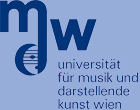List of Vienna Talk 2010 presenters

Amir, Noam
(P,O)Andermann, Martin
(P)Arzt, Andreas
(O)Bastos, Patricia Lopes
(P)Beauchamp, James Warren
(O,O)Bendl, Ingrid
(P)Bertsch, Matthias
(P)Bisesi, Erica Elisabetta
(O)Buen, Anders
(O)Campbell, Murray
(O)Cano, Estefania
(P)Carral, Sandra
(P)Carter, Stewart Arlen
(O)Chatziioannou, Vasileios
(P)Chick, John
(O)Curtit, Marthe
(O)Dalmont, Jean-Pierre
(O)Davidenkova, Ekaterina
(O)Demoucron, Matthias
(O)Doutaut, Vincent
(P)Dörfler, Monika
(O)Flossmann, Sebastian
(O)Fouilhe, Eric
(O)Fricke, Jobst P.
(O)Fritz, Claudia
(O)Gingras, Bruno
(O)Goebl, Werner
(P)Granzotto, Nicola
(P)Grosshauser, Tobias
(O)Guettler, Knut
(O)Hansen, Uwe J
(O)Kartofelev, Dmitri
(P)Kausel, Wilfried
(P)Kemp, Jonathan
(O,O)Klaus, Sabine Katharina
(O)Kostek, Bozena
(O)Lambrechts-Douillez, Jeannine
(O)Lohri, Angela
(P)Marchand, Sylvain
(O)Mayer, Alexander
(P)Moore, Thomas
(O,O)Morrison, Andrew
(O)Myers, Arnold
(O)Nederveen, Cornelis J
(O)Niedermayer, Bernhard
(O)Norman, Lisa
(O)Oehler, Michael
(O)Otcenasek, Zdenek
)Pyle, Robert W.
(O,O)Reuter, Christoph
(O)Richardson, Bernard
(P,O)Presentation type: Poster
Guitar making – the acoustician’s tale
A long-standing research programme at Cardiff University has established the low- and mid-frequency mechanics and acoustics of the classical guitar. Techniques such as holographic interferometry and finite-element analysis have yielded considerable information about the modal characteristics of the instrument and their relationship with the construction and materials of the instrument. Considerable work has also been undertaken to determine the sound-radiation fields associated with these modes, establishing those modes which make the greatest contribution to the radiated energy. Studies of string dynamics (including the interaction with the player’s fingertip) show how readily the strings’ energy is coupled to the body and sound field. Our measurements and models allow a relatively small number of measured parameters to be used to predict the sounds radiated by a guitar; these sounds can be used for psychoacoustical tests to gauge those modifications to the guitar’s structure which are likely to produce perceptible differences in sound quality.
The aim of this paper is to present the key finding of this work in a form accessible for the practical maker and to present simple models which can be used by makers for effective decision making during the construction of an instrument.

Mode studies of plucked stringed instruments: Application of holographic interferometry
The acoustics group at Cardiff have used holographic interferometry for many years to study the vibrations of musical instruments. After a brief review of the technique and equipment and the particular strengths and weaknesses of this analysis tool, the paper will describe measurements on historic, modern and experimental guitars and related instruments. These studies highlight the effects of strutting and bracing patterns used on the underside of the soundboard and the size and positioning of the bridge, which give insight how the design and construction of these instruments affects their mechanical vibrational properties and their acoustical function.
Whilst there will be some technical elements in this paper, the intention is to assist the maker in interpreting these intriguing images and using them to make informed decisions about modifications in the designs of musical instruments.

Rose, Maria
(O)Rossing, Thomas D.
(O,O)Sanchez, Monica
(P)Schoonderwaldt, Erwin
(O)Sharp, David
(O)Siddiq, Sadjad
(P)Skala, Jan
(P)Smith, Richard
(O)Sundberg, Johan
)Taylor, Crissman
(O)Tronchin, Lamberto
(O)Tsai, Pei Ju
(P)Vereecke, Hannes William
(P)Vergez, Christophe
(O)Widmer, Gerhard
(O)Worland, Randy
(O)Ziegenhals, Gunter
(O)van der Linden, Janet
(O)





